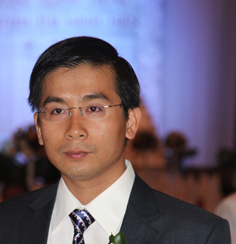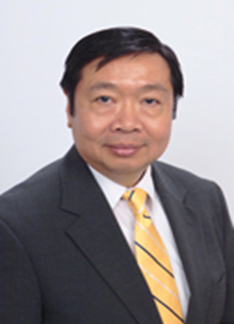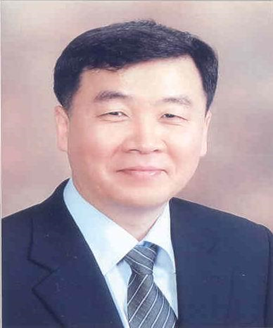IEEE ICCE 2022
Keynotes
Ultra-Reliable and Low-Latency Communications for 6G
by Trung Q. Duong
Queen’s University Belfast, U.K.
Abstract
According to startling statistics from CISCO, global mobile data traffic is exponentially increasing, and the number of Internet of Things (IoT) devices worldwide is forecast to triple from 2020 to 2030. Pursuing ever-higher data rates has been the central design goal in all the previous generations of cellular networks. Thus, the need for improved wireless reliability and latency is greater than ever in 6G systems. As one of the three new application scenarios, ultra-reliable and low-latency communications (URLLC) are expected to meet these stringent quality-of-service (QoS) requirements. It has the potential to enable a new range of mission-critical applications and services such as self-driving vehicles, tele-surgery, autonomous factory. The market for URLLC service is forecast by ABI research to be worth US$18.9 billion by 2028, creating a vast opportunity for research and development to fulfil the communications needs in several vertical sectors, including healthcare, mobility and transport, and manufacturing. However, the enabling technologies for URLLC are stills in its infancy. This talk will discuss innovative paradigm of URLLC, not only basic requirements, essential definitions related to URLLC but also state-of-the-art technologies including digital twins.
|
Trung Q. Duong |
Biography Dr.Trung Q.Duong (IEEE Fellow) is a Chair Professor of Telecommunications at Queen’s University Belfast, U.K. and a Research Chair of the Royal Academy of Engineering, U.K. His current research interests include optimisation, signal processing, and machine learning in wireless communications. He has published more than 400 books/book chapters/journal articles/conference papers with 14,000+ citations and h-index 64. He has served as an Editor for the IEEE Transactions on Wireless Communications, IEEE Transactions on Communications, IEEE Transaction on Vehicular Technology, IEEE Communications Letters, and IEEE Wireless Communications Letters. He has received the Best Paper Award at the IEEE VTC-Spring in 2013, IEEE ICC in 2014, IEEE GLOBECOM in2016, IEEE DSP in 2017, and IEEE GLOBECOM 2019. He is the recipient of the Royal Academy of Engineering Research Fellowship (2015-2020) and the prestigious Newton Prize 2017. He is a Fellow of IEEE. |
High Penetration Renewable Energy and the Role of Energy Storage
by Eduard Muljadi
Auburn University, Alabama, USA
Abstract
This presentation covers the challenges of High Penetration Renewable Energy and the opportunity to maintain supply-demand balance with various energy storage. The presentation covers a brief introduction to the traditional power system, renewable energy, and the comparison between conventional and renewable power plants. The importance of ride-through requirements on renewable geneators and the process of supply-demand balancing with available commercial energy storage; and several examples and demonstration projects will also be presented.
|
Eduard Muljadi |
Biography Eduard Muljadi (M’82, SM’94, F’10) received his Ph.D. in electrical engineering from the Univ. of Wisconsin, Madison. He was a faculty at California State University, Fresno (1988-1992). From 1992-2017, he worked at the National Renewable Energy Laboratory in Golden, CO. In January 2018, he joined Auburn University in Auburn, AL, as the James J. Danaher distinguished professor. His research interests include electric machines, power electronics, and power systems, and renewable energy. He is a member of Eta Kappa Nu, Sigma Xi, a fellow of the IEEE, and an editor of the IEEE Transactions on Energy Conversion. He is a member of various subcommittees within the IEEE Industry Application Society (IAS), Power Electronics Society, and Power and Energy Society (PES). He is the founding member, and the past chair of the Renewable Energy Machines and Systems subcommittee, and the chair of the Advanced Pumped Storage Hydropower Modeling Task Force within the PES. He holds patents in power conversion for renewable energy. |
CMOS based sub-THz Wireless Transceivers for Future Communications: Directions and Remaining Issues
by Sang-Gug Lee
KAIST, Daejeon, Korea
Abstract
This talk will introduce the technology directions of state-of-the-art sub-THz transceivers focusing on CMOS technology, and summarize the remaining issues that need to be overcome, then introduce potential solutions in terms of transceiver architectures and circuit topologies.
|
Sang-Gug Lee |
Biography Sang-Gug Lee was born in Gyungnam, Korea in 1958. He received a B.S. degree in electronic engineering from Gyungbook National University, Daegu, Korea, in 1981, and M.S. and Ph.D. degrees in electrical engineering from the University of Florida, Gainesville, Florida, USA, in 1989 and 1992, respectively. In 1992, he joined Harris Semiconductor, Melbourne, Florida, USA, where he was engaged in silicon-based RF IC designs. From 1995 to 1998, he was with Handong Global University, Pohang, Korea, as an assistant professor in the school of computer and electronic engineering. From 1998 to 2009, he was with Information and Communications University, Daejeon, Korea as an assistant, associate, and full professor in the school of engineering. Since March 2009, he is with KAIST, Daejeon, Korea, as a professor in the department of electrical engineering. In 2017, he has been appointed as an ICT chair professor at KAIST. His research interest is CMOS-based radio transceiver IC designs, lately focusing on ultra-low power and extreme high frequencies (that is, sub-TeraHertz) implementations. In the past 10 years, his research interests also include other analog integrated circuit designs such as display semiconductors, power management ICs, and automotive ICs. Lately, his interest has been extended into the Li-ion battery management and diagnosis technologies based on thermodynamic parameters as well as electrochemical spectroscopy. From 2005 to 2009, he served as a technical committee member of IEEE ISSCC in the wireless communication technology committee. From 2005 to 2010, he served as a research director of Auto-ID Lab Korea. In 2007, his laboratory was selected as a National Research Laboratory. From 2012 to 2017, he served as a director of Future Promising Fusion Technology Pioneer Center, leading a research group in the area of silicon technology-based THz IC design. |


